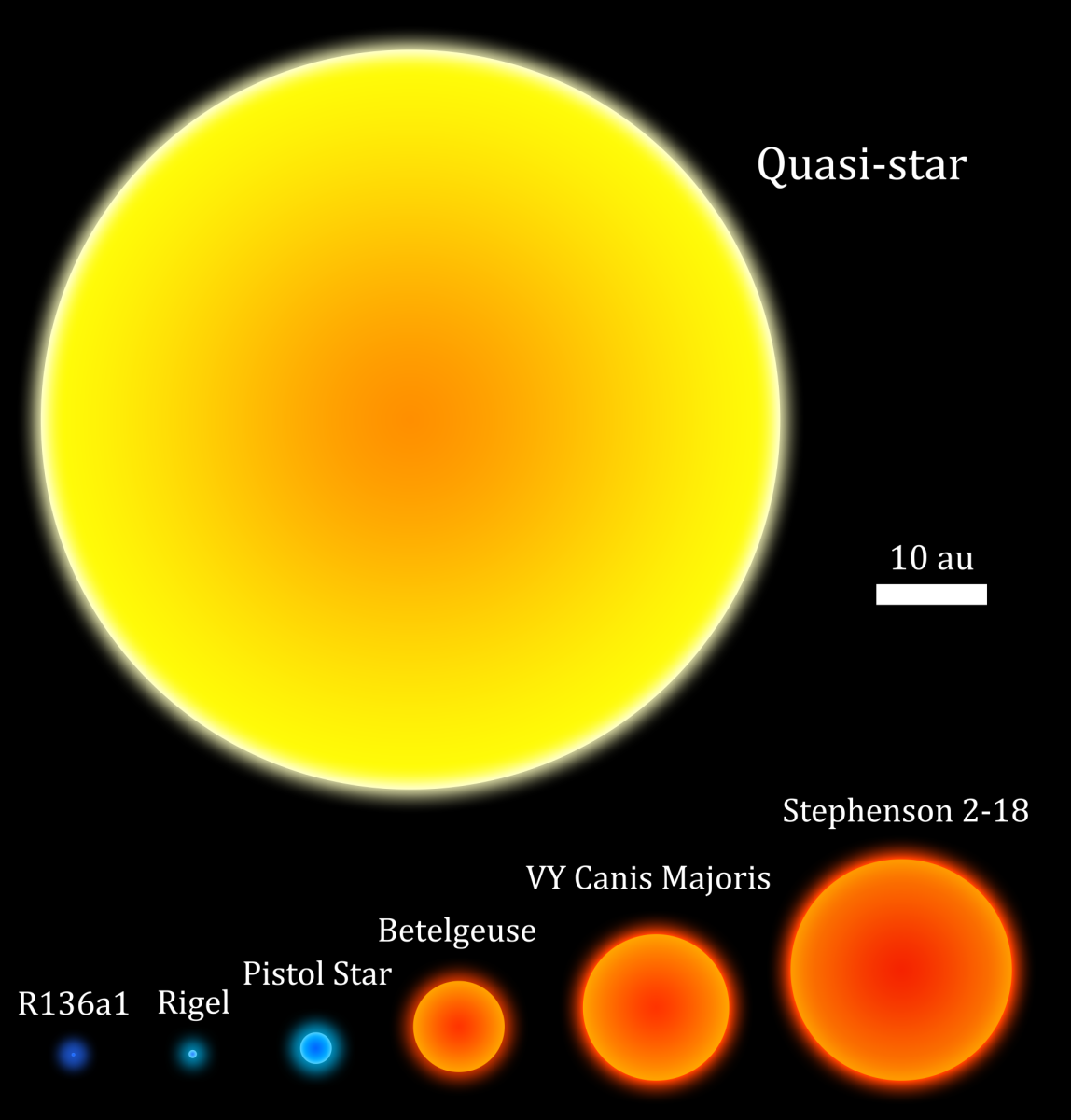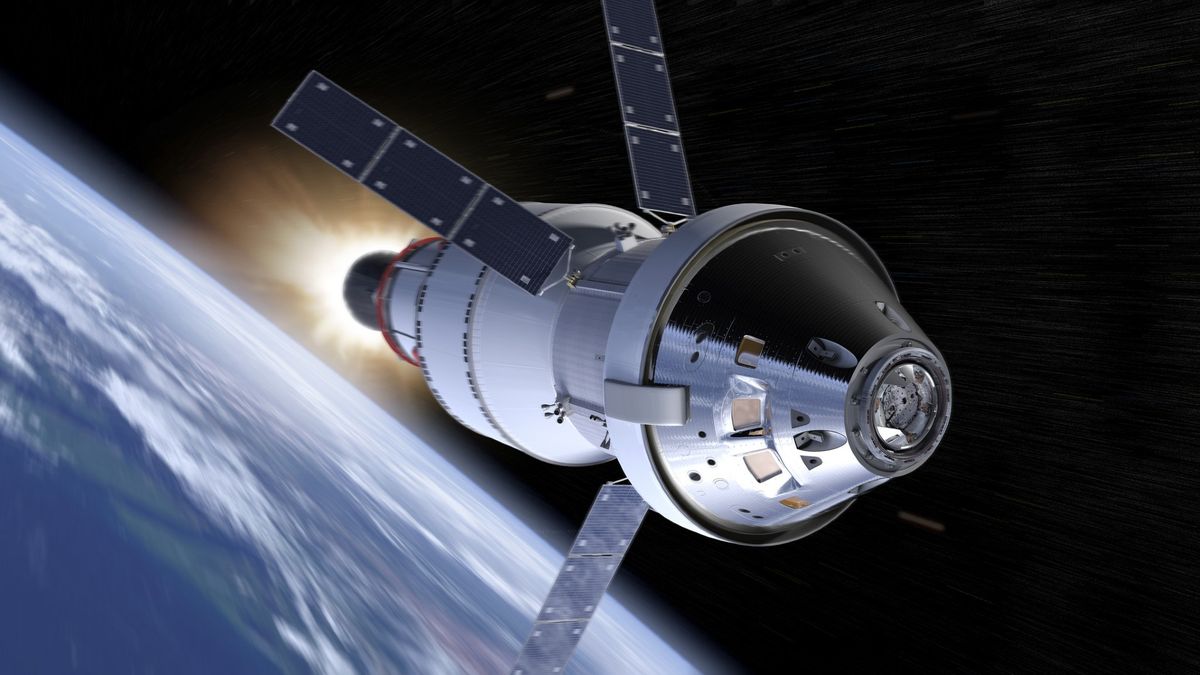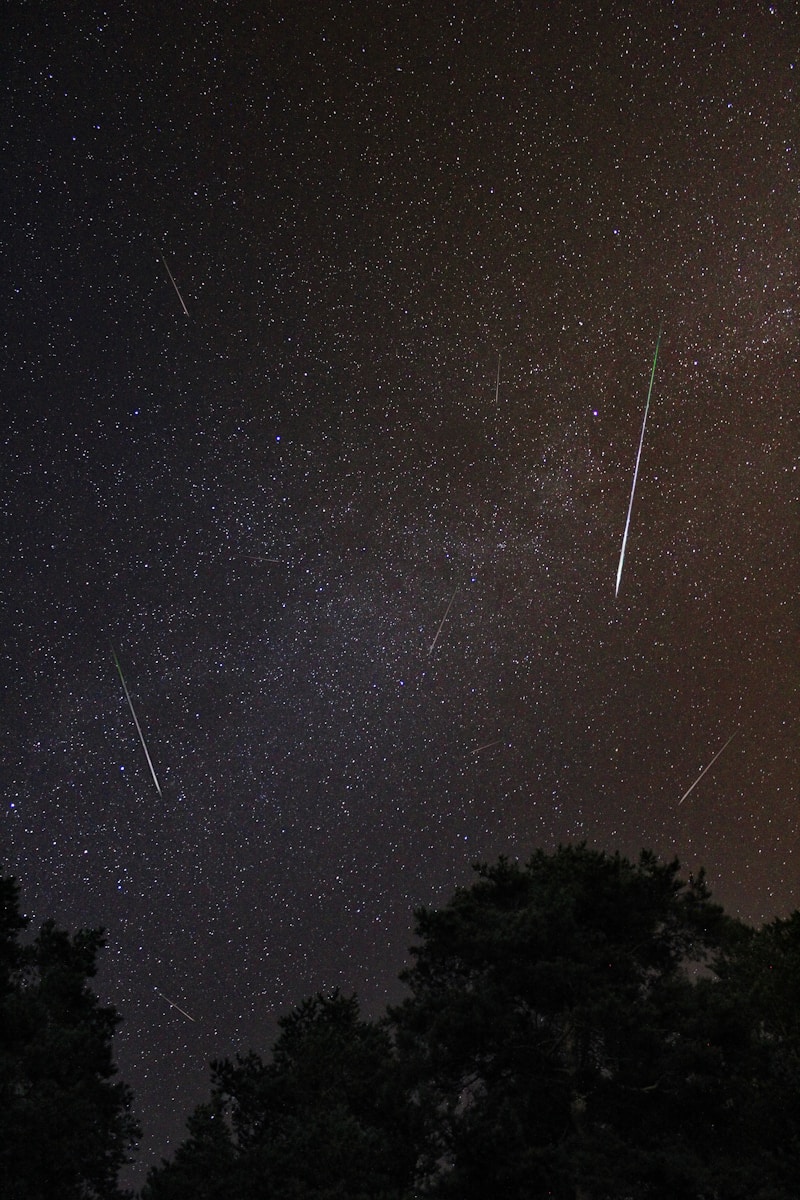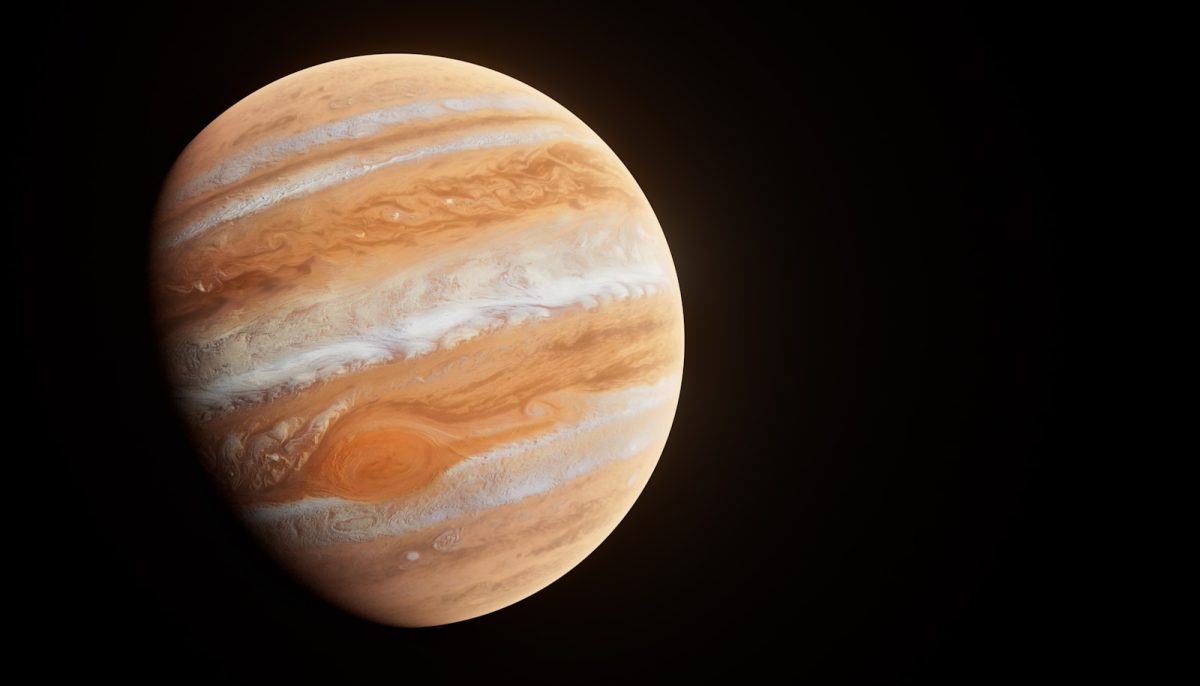Black hole stars, better known as Quasi-stars, take the weird properties of stars and black holes and extend it further to make something that breaks everything we have known about how stars form.
These stars were the largest any star could of and can ever exist in the universe, dwarfing Stephenson 2-18, the largest star we have ever discovered to date.
Their existence has not been confirmed yet. But they are hypothesized to have existed in the short window of about one hundred million to five hundred million years after the big bang. Back when the universe was much smaller and much more concentratedly packed with hydrogen and not contaminated with heavier elements like today. It is thought that these stars are progenitors of the supermassive black holes at the center of galaxies that we know today.
Formation & Supernova

The way quasi stars form is somewhat strange. They only exist as quasi-stars once after the central core of an absurdly large protostar collapses into a black hole in a fast-forwarded supernova with the exception of the outer layer staying intact (unlike modern stars which get destroyed).
Such a large protostar would need to be at least 1,000 sun masses & could only exist in the early universe (mentioned earlier). As for how those form, they form similar to how a regular star forms, only the hydrogen gas cloud does not get blown away by the star’s birth due to its mass being much higher as a part of “Dark Matter Halos” drawing in an absurdly much larger quantity of hydrogen. This results in the gas cloud getting piled onto the new-born star & forcing it to grow exceptionally large.
Nuclear blackhole fusion?
Stars of today are kept stable by nuclear fusion at their cores, releasing energy to counter its gravity. A black hole embedded in a quasi-star is different, normally black holes have restrictions on how fast they can grow (radiation, heat, accretion disk stuff etc.). Inside a quasi-star, the sheer crushing force of gravity & pressure overcomes all of these restrictions, essentially force-feeding the black hole with matter, the huge amount of radiant energy produced by the black hole from this “force-feed” is enough to counteract gravity & keep the star stable for at max seven million years.
Death.
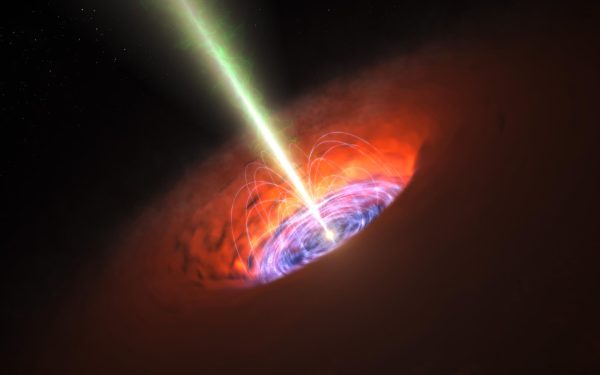
Quasi stars have a surface temperature of 10,000° K, at these temperatures, they would burn brighter than small galaxies. As the black hole embedded eats more mass, they grow from a couple sun masses, to 10,000 sun masses, the star also begins cooling down & start swelling at this time. At the final stages of their lifespan, they are over thirty times wider than our solar system and at the surface temperature of 4,000° K. Shortly after this, the star gets ripped apart, leaving behind the 100,000-sun mass black hole.
Related Stories:
https://en.wikipedia.org/wiki/Quasi-star
https://www.universeguide.com/fact/quasistar
https://www.aanda.org/articles/aa/full_html/2013/10/aa21949-13/aa21949-13.html
Take Action:
(Credit to https://esteemstream.news/86790/transportation/space/saturn-will-lose-its-rings for it’s take actions)
